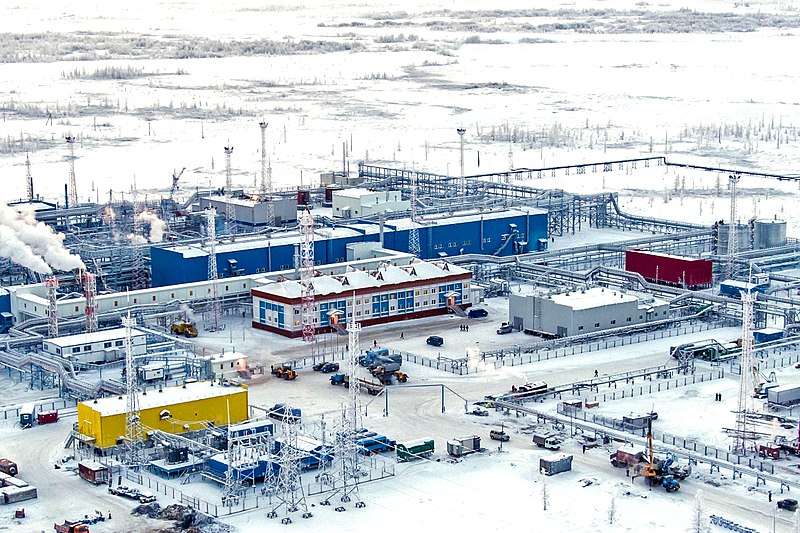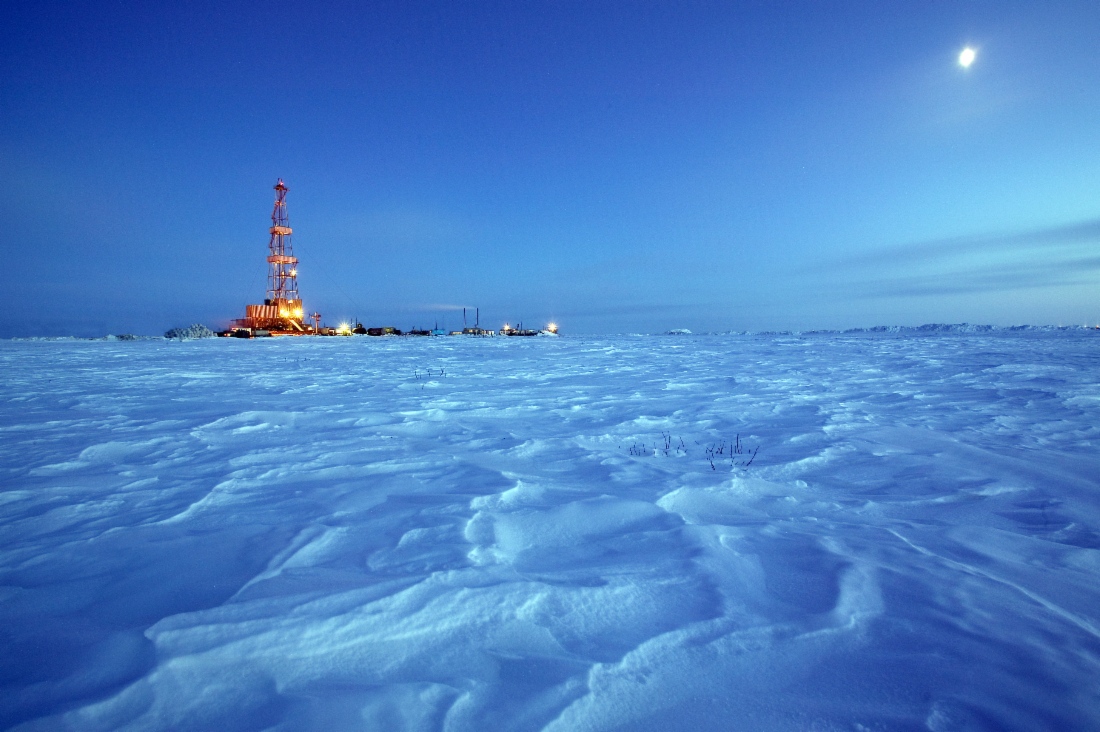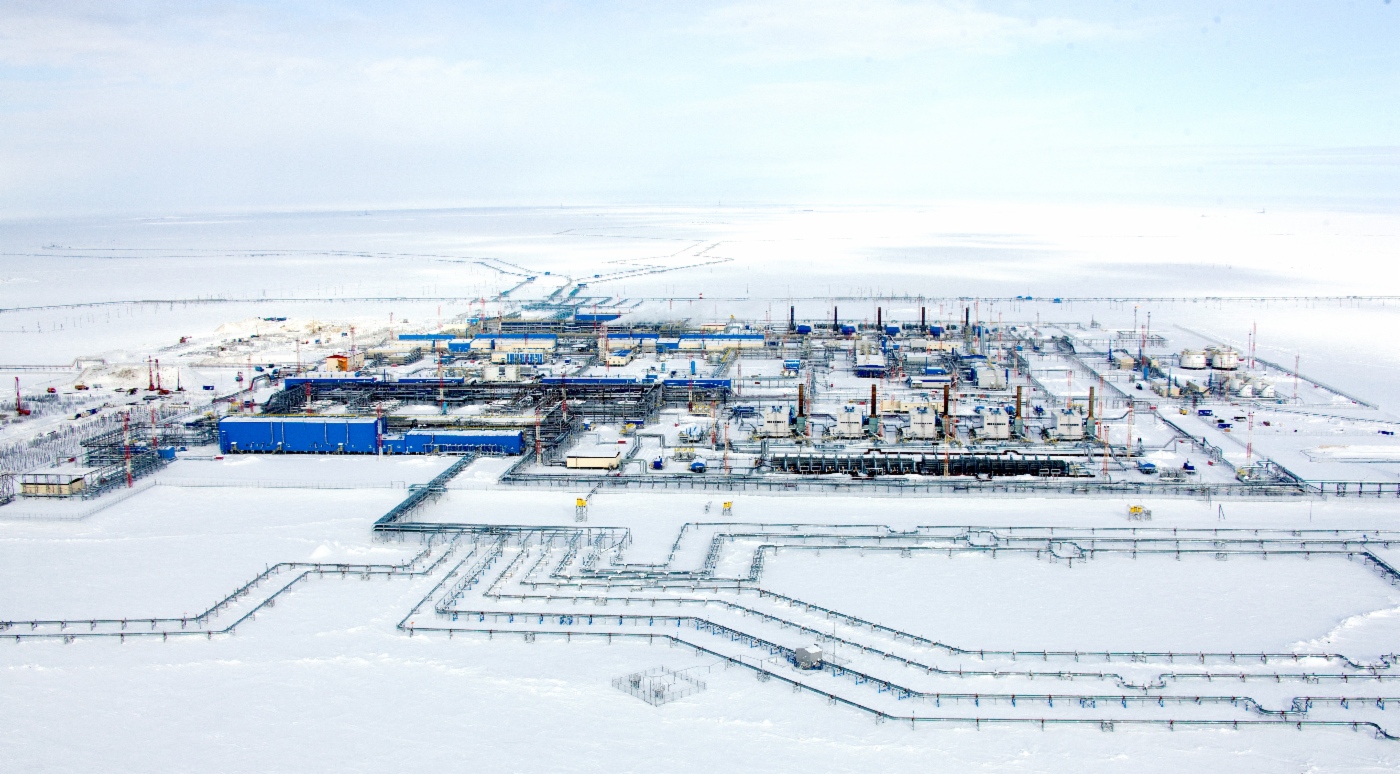Russia holds the largest natural gas reserves in the world, with more than half of them located in Siberia. Over 70% of the country's reserves are currently held by Gazprom, a state-owned company.

Image: Zapolyarnoye gas field, gas treatment installation. Photo courtesy of Russian Federation Government/Wikipedia.
NS Energy profiles the largest natural gas fields in Russia, based on their reserves in trillion cubic metres (Tcm)
Urengoy field – 10.9Tcm
Located in the northern West Siberia Basin, the Urengoyskoye gas and condensate field has been in production since 1978.
Operated by Gazprom, the Urengoyskoye field is situated in the northern West Siberia Basin in Yamalo-Nenets Autonomous Okrug. Spread over 12,000km², the Russian hydrocarbon asset was discovered in 1966. It is also considered to be the world’s second largest natural gas field.
Gazprom is currently working on the hard-to-reach Achimov deposits to draw more gas and condensate from the Urengoyskoye field. The C1 (explored) reserves of the Achimov deposits are more than a trillion cubic metres of gas and 400 million tonnes of condensate.
Production from the Achimov deposits has been planned to be achieved through the development of five pilot blocks namely 1A, 2A, 3A, 4A, and 5A. Of these, Block 2A began producing gas in 2009, followed by Block 1A in 2011.
The other three are being prepared for development with Gazprom hoping to draw close to 36.8 billion cubic metres (bcm) per year of gas once all the five blocks hit their full capacity.

Yamburg field – 8.2Tcm
Yamburg, which is operated by Gazprom and located in Yamalo-Nenets Autonomous Okrug in Tyumen Oblast, is also the world’s third biggest natural gas field.
Discovered in 1969, the onshore Yamburg oil and gas condensate field was brought into production in 1986 following approximately six years of development work. Like the Urengoyskoye field, Yamburg is also located in West Siberian Basin, and is 148.5km north of the Arctic Circle in the Tazovsky and Nadymsky districts.
In April 2019, Gazpromneft-Zapolyarye, a subsidiary of Gazprom Neft, concluded a long-term risk-based operator agreement with Gazprom subsidiaries, enabling it to start development of Achimov strata at the Yamburg field. Gazprom Neft expects to start commercial production from the Yamburg field’s Achimov deposits in 2024.
According to Gazprom Neft, reserves in place at Achimov deposits at Yamburg are estimated to be 1.2 billion tonnes.
Bovanenkovo field – 4.9Tcm
Located in the Yamalo-Nenets Autonomous Okrug, the onshore Bovanenkovo field operated by Gazprom has been in production since 2012.
According to Gazprom, Bovanenkovo is the largest field in the Yamal Peninsula on the basis of explored gas reserves and is part of the Yamal megaproject being developed by the company.
Bovanenkovo was discovered way back in 1972. The field’s design gas production capacity is 115bcm per year, which is likely to reach 140bcm per year following the development of Neocomian-Jurassic deposits.
The main development target at Bovanenkovo is the Cenomanian-Aptian deposits, which were developed by three gas production facilities commissioned between 2012 and 2018.
Gas produced from the Bovanenkovo field is delivered to the Unified Gas Supply System through the Bovanenkovovo–Ukhta and Bovanenkovovo–Ukhta 2 pipelines, which are roughly 1,200km-long each.

Shtokmn field – 3.9Tcm
Discovered in 1988, the Shtokman gas and condensate field is located in the central part of the Russian sector of the Barents Sea, approximately 600km north-east of Murmansk and in water depths of ranging from 320m to 340m.
The Shtokmn field’s C1 (explored) reserves total 3.9Tcm of gas and 56 million tonnes of gas condensate.
In February 2008, Russian state-owned energy giant Gazprom, Total, and StatoilHydro signed an agreement to create Shtokman Company to develop the field in three stages. Shtokman Development was formed to organise the project engineering, development, construction, financing, and exploitation of first phase facilities related to the development of the Shtokman field.
Gazprom had 51% stake in Shtokman Development, while Total and StatoilHydro had 25% and 24% stakes, respectively. Gazprom, however, subsequently acquired 100% controlling stake in the company.
Gazprom now operates the gas and condensate prospecting, exploration, and production license within the Shtokman field, which is expected to reach its design capacity of 71.1bcm of gas per year in the third phase of its development.
Zapolyarnoye field – 3.5Tcm
The Zapolyarnoye field is located in the southern part of the Taz District, 220km away from Novy Urengoy, Yamal-Nenets Autonomous Area.
Discovered in 1965, the field forms part of the Western Siberia oil and gas bearing province and is capable of producing 130bcm of gas per year. It is owned and operated by Gazprom.
Spread over an area of 8,745ha, the field comprises two deposits, namely Cenomanian and Valanginian. Production from the field started in 2001, with the development of the Cenomanian deposits. Gazprom began producing gas and condensate from the deeper Valanginian (Neocomian) deposits in 2011. The field’s production reached the trillion cubic metres mark in December 2012.
A total of five comprehensive gas treatment units (CGTU) are used to produce raw hydrocarbons from Zapolyarnoye field, including three CGTUs to treat gas from the Cenomanian deposits and two CGTUs to treat gas from Valanginian deposits.
The 190km Zapolyarnoye-Urengoy gas trunkline system (GTS) transports the gas produced from the field to the market.
